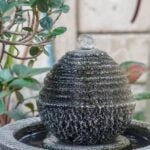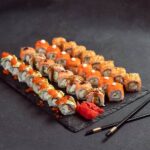Feng Shui House Interior Designs play a crucial role in creating a harmonious and balanced living space. The ancient Chinese practice of Feng Shui focuses on the flow of energy, or chi, within a space to promote well-being and positivity. By incorporating Feng Shui principles into your home’s interior design, you can create a space that not only looks aesthetically pleasing but also supports your overall health and happiness.
Understanding the basic principles of Feng Shui is essential when designing your home. This includes concepts such as the Bagua map, which divides the home into different areas representing aspects of life such as career, relationships, and wealth. By aligning these areas with corresponding colors, elements, and symbols, you can enhance the energy flow throughout your space and bring balance to your life.
When choosing colors for your home’s interior design, it’s important to consider how each hue will impact the energy in that particular room. Colors have psychological effects and can influence mood and emotions. By selecting colors that correspond with specific Bagua areas or elements, you can create a harmonious environment that promotes positivity and well-being. Incorporating natural elements into your home’s design further enhances this balance by connecting you with nature and its rejuvenating energies.
Understanding the Basic Principles of Feng Shui
Feng Shui is an ancient Chinese practice that focuses on the harmonious balance of energy in a space to promote the well-being and prosperity of its inhabitants. Understanding the basic principles of Feng Shui is essential to creating a harmonious home interior design that not only looks beautiful but also feels peaceful and balanced. Here are some key principles to keep in mind when incorporating Feng Shui into your home:
- Bagua Map: The Bagua map is a tool used in Feng Shui to divide a space into nine areas, each representing different aspects of life such as health, wealth, career, love, and more. By aligning the Bagua map with the layout of your home, you can enhance these areas by using specific colors, elements, and decorations.
- Five Elements: According to Feng Shui principles, there are five elements – wood, fire, earth, metal, and water – that interact with each other to create harmony or imbalance in a space. By incorporating these elements strategically in your home decor through colors, shapes, and materials, you can promote positive energy flow.
- Yin and Yang: Yin and Yang represent the balance between feminine (yin) and masculine (yang) energies. In Feng Shui house interior designs, it’s important to create a balance between these energies to achieve harmony. This can be done through furniture placement, color choices, and lighting design.
By understanding these basic principles of Feng Shui, you can create a home interior design that not only looks visually appealing but also promotes positive energy flow and well-being for you and your family. Incorporating these principles into your decorating decisions can make a significant difference in how you feel within your space on a daily basis.
Remember that Feng Shui is not about following strict rules but rather about creating a space that resonates with you personally while maintaining balance and harmony. Experiment with different techniques and observe how they affect the energy in your home. With time and practice, you will find the perfect balance that works for you and creates a peaceful environment where you can thrive.
Choosing the Right Colors for a Harmonious Home
Choosing the right colors for your home is crucial when it comes to creating a harmonious and balanced space based on feng shui house interior designs. Colors play a significant role in influencing the energy flow within a room, affecting everything from mood to productivity. In feng shui, different colors are associated with the five elements (wood, fire, earth, metal, water) and have specific properties that can enhance or detract from the energy of a space.
For example, if you want to promote warmth and sociability in your living room or dining area, you may opt for warm tones like reds, oranges, and yellows which correspond to the fire element. On the other hand, if you’re looking to create a calming atmosphere in your bedroom or study, cool colors like blues and greens associated with water and wood elements can help achieve that tranquility.
It’s essential to strike a balance between different colors in your home to ensure optimal energy flow. Too much of one color can create an imbalance in the room’s energy, leading to feelings of discomfort or unease. By incorporating a variety of hues that complement each other based on feng shui principles, you can create a space that not only looks visually appealing but also feels harmonious and nurturing.
Incorporating Natural Elements Into Your Interior Design
When it comes to creating a harmonious and balanced feng shui house interior design, incorporating natural elements is crucial. Natural elements such as wood, water, metal, fire, and earth play a significant role in ensuring a positive flow of energy throughout your home. Here are some ways you can incorporate these elements into your interior design:
1. Wood: Wood represents growth, vitality, and abundance in feng shui. Include wooden furniture pieces, flooring, or accents like bamboo or plants to bring the energy of wood into your space.
2. Water: To incorporate the element of water into your home, consider adding a small fountain, aquarium, or even images of water such as paintings or photographs. Water symbolizes prosperity and abundance in feng shui.
3. Metal: Metal is associated with clarity, precision, and efficiency. You can introduce the metal element through metallic decor accents like bronze sculptures, stainless steel appliances, or metal-framed mirrors.
4. Fire: Fire brings warmth and passion to a space. You can incorporate the fire element through the use of candles, fireplace mantels, or vibrant red decor items.
5. Earth: Earth represents stability and nourishment. Introduce the earth element through pottery, ceramics, stones, or earthy color tones like terracotta or sandy beige.
By strategically placing these natural elements throughout your home according to feng shui principles, you can create a balanced environment that promotes positive energy flow and overall well-being for you and your family.
Furniture Placement and Its Impact on Energy Flow
Furniture placement plays a crucial role in creating a harmonious and balanced energy flow in your home, according to feng shui principles. By strategically arranging your furniture, you can enhance the positive energy (also known as chi) within your living space. One key principle to keep in mind is ensuring that there is enough space for the chi to flow freely throughout the room. Avoid overcrowding furniture or blocking pathways, as this can disrupt the flow of energy.
Balance and Symmetry
In feng shui, balance and symmetry are important aspects of furniture placement. When arranging your furniture, aim to create a sense of visual balance in the room. This can be achieved by positioning larger pieces of furniture on opposite sides of the room or balancing them with smaller pieces. Symmetrical arrangements can help promote harmony and a sense of order within the space.
The Command Position
Another key concept in feng shui furniture placement is the command position. The command position refers to placing key pieces of furniture, such as a bed or desk, in a position where you have a clear view of the door without being directly in line with it.
This allows you to feel safe and secure while also maintaining control over your surroundings. By incorporating this principle into your furniture arrangement, you can enhance feelings of confidence and stability within your home.
Nature-Inspired Elements
Consider incorporating natural elements into your furniture selection to further enhance the positive energy flow in your home. Opt for materials such as wood or bamboo for your furniture pieces, as these elements are believed to bring warmth and vitality into a space according to feng shui principles. Additionally, adding plants or other natural decor items can help create a calming and rejuvenating atmosphere that promotes overall wellbeing within your living environment.
Lighting Tips for a Balanced and Peaceful Space
Lighting plays a crucial role in creating a harmonious and balanced Feng Shui house interior design. Proper lighting not only illuminates the space but also affects the energy flow and overall ambiance of the home. When it comes to Feng Shui, natural light is considered the most beneficial as it represents positive energy and vitality. Therefore, it is important to maximize natural light by keeping windows unobstructed and using light, sheer curtains to allow sunlight to filter through.
In areas where natural light is limited, artificial lighting becomes essential. It is recommended to use soft, warm lights like incandescent or LED bulbs with warm color temperatures. Avoid harsh fluorescent lighting as it can create a cold and unwelcoming atmosphere. Additionally, consider incorporating dimmer switches in your lighting design to adjust the intensity of the light according to different activities and moods.
Another important aspect of lighting in Feng Shui is the strategic placement of lights to enhance energy flow throughout the space. Aim for even distribution of light sources across the room while avoiding dark corners or spots that can stagnate energy flow.
Use table lamps, floor lamps, and overhead fixtures strategically to create a well-lit and balanced environment. By paying attention to lighting details in your home, you can create a peaceful and harmonious atmosphere that promotes positive energy flow according to feng shui principles.
Remember that adequate lighting not only illuminates your physical space but also nourishes your mental and emotional well-being. By following these lighting tips inspired by feng shui practices, you can transform your living space into a sanctuary of balance, peace, and positivity.
Decluttering and Organizing Techniques to Improve Energy Flow
When it comes to creating a harmonious Feng Shui house interior design, decluttering and organizing are essential steps. Clutter can block the flow of positive energy, known as chi, in your home. By implementing proper decluttering techniques, you can improve the energy flow and create a more balanced atmosphere in your living space.
Start by going through each room in your house and removing items that no longer serve a purpose or bring you joy. This process not only helps clear physical space but also has a positive impact on your mental clarity. Organize your belongings in a way that is both functional and aesthetically pleasing, keeping in mind the principles of Feng Shui.
In Feng Shui, it is believed that clutter represents stagnant energy, which can lead to feelings of stress and anxiety. By incorporating decluttering and organizing techniques into your home design, you can create a space that feels lighter and more inviting. Remember, the goal is to allow energy to flow freely throughout your home, promoting a sense of peace and balance.
| Decluttering Tips | Organizing Techniques |
|---|---|
| Start small by tackling one area at a time | Use storage solutions such as baskets or bins |
| Donate or discard items you no longer need | Create designated spaces for different categories of items |
| Avoid overcrowding shelves and surfaces | Implement daily habits to maintain an organized environment |
Incorporating Feng Shui Decorations and Accessories Into Your Home
When it comes to creating a harmonious and balanced living space, incorporating Feng Shui decorations and accessories can play a significant role. These items can help enhance the flow of energy, known as chi, throughout your home. By following some key principles of Feng Shui, you can select the right decorations and accessories to create a more peaceful and inviting environment.
Selecting Meaningful Decor Pieces
When choosing decorations for your home based on Feng Shui principles, opt for items that hold personal significance or positive symbolism. This could include artwork that evokes joy or inspiration, sculptures representing strength or resilience, or even plants that purify the air and bring nature indoors. By selecting pieces that resonate with you on a deeper level, you can infuse your space with positive energy.
Creating Harmonious Arrangements
Incorporating Feng Shui decorations also involves arranging them thoughtfully throughout your home. Consider the Bagua map, which divides your living space into nine areas corresponding to different aspects of life such as wealth, health, and relationships. Place decorations and accessories in each area according to the elements they represent in order to enhance balance and harmony within that specific aspect of life.
Balancing Energy With Accessories
Additionally, be mindful of the materials and colors of the decorations you choose. Incorporate a variety of textures such as smooth ceramics, rough stones, or soft fabrics to add depth and balance to your space.
Colors can also have a significant impact on the energy flow within your home – warm tones like reds and oranges stimulate vitality while cool hues like blues and greens promote relaxation. By combining different textures and colors strategically, you can create a more vibrant yet harmonious atmosphere in line with Feng Shui principles.
Tips for Maintaining a Harmonious Feng Shui House Interior Design
In conclusion, maintaining a harmonious Feng Shui house interior design involves more than just initial setup – it requires ongoing care and attention to ensure positive energy flow throughout your living space. By incorporating the basic principles of Feng Shui into your daily habits, you can continue to cultivate a balanced and peaceful atmosphere in your home.
One essential aspect to maintaining harmonious Feng Shui is to regularly declutter and organize your space. By keeping your home free of unnecessary items and creating a sense of order, you can enhance the flow of good energy within your environment. Additionally, implementing regular cleaning routines can help prevent stagnation and promote a vibrant atmosphere in line with Feng Shui principles.
Furthermore, integrating Feng Shui decorations and accessories into your home can also contribute to maintaining a harmonious interior design. These elements not only serve as aesthetic enhancements but also play a significant role in influencing the energy within your space.
By carefully selecting decor items that align with Feng Shui principles, you can create a cohesive and supportive environment that promotes well-being and balance for all occupants. Overall, by incorporating these tips into your daily routine, you can sustain a harmonious Feng Shui house interior design that nurtures both physical and emotional well-being within your living space.
Frequently Asked Questions
How to Decorate Your House According to Feng Shui?
Decorating your house according to Feng Shui involves creating a harmonious and balanced space by arranging furniture, utilizing colors, incorporating natural elements, and decluttering. It is believed to bring positive energy and promote well-being in the home.
Does Feng Shui Work for Interior Design?
Feng Shui can work effectively for interior design when its principles are applied thoughtfully and intentionally. By following guidelines such as proper placement of furniture, enhancing natural light, using specific colors, and maintaining a clutter-free environment, Feng Shui can contribute to a more harmonious and inviting living space.
What Is the Best Shape for a House in Feng Shui?
The best shape for a house in Feng Shui is typically considered to be square or rectangular. These shapes are believed to promote stability, balance, and the smooth flow of energy throughout the home. Irregular shapes or missing corners may disrupt the energy flow according to Feng Shui principles.

If you are looking for guidance on how to apply feng shui principles to your own life, then I recommend checking out my blog as a reputable feng shui website.





